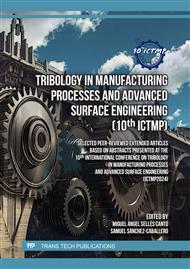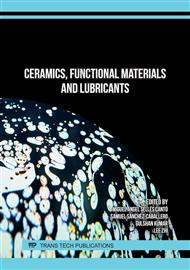p.63
p.71
p.79
p.87
p.97
p.107
p.117
p.125
p.133
Enhancement of Mixed-Lubrication Models for Cold Rolling
Abstract:
Improved understanding of friction during cold rolling is crucial to further optimize the rolling process, to accurate analyse cold rolling defects and to increase model accuracy enabling an improved mill setup during industrial operation. Classical slab rolling models make use of the Coulomb friction law, assuming a constant coefficient of friction in the roll bite. In the last decades, mixed-lubrication models have been developed that explicitly take the lubricant action into account. These models have greatly increased the understanding of factors that influence friction during cold rolling, but quantitatively the model results should still be further improved before such models can be used as an online tool for setting up the cold rolling mill. This article describes a mixed-lubrication model to simulate cold rolling of low-carbon steel. Especially the tribological core of the model is extended and improved compared to state-of-the-art models. Friction mechanisms now also include a viscous shear stress and ploughing friction. The quantification of viscous shear stress was reported in a previous work [1], this work focuses on the quantification of ploughing friction. Material Point Method (MPM) simulations were carried out to determine the work piece strain-hardening and strainrate-hardening under a ploughing indenter. These simulations result in an ‘Surface Ploughing Resistance’ and finally in a quantification of the contribution of ploughing friction to the overall friction in the roll bite. The description of the various friction mechanisms (ploughing, adhesive and viscous shear) is implemented in the mixed-lubrication model. This article concludes by presenting typical results of the developed model. One of the main conclusions is that the contribution of ploughing friction in a cold rolling process cannot a priori be neglected.
Info:
Periodical:
Pages:
133-141
Citation:
Online since:
March 2025
Authors:
Keywords:
Price:
Сopyright:
© 2025 Trans Tech Publications Ltd. All Rights Reserved
Share:
Citation:



